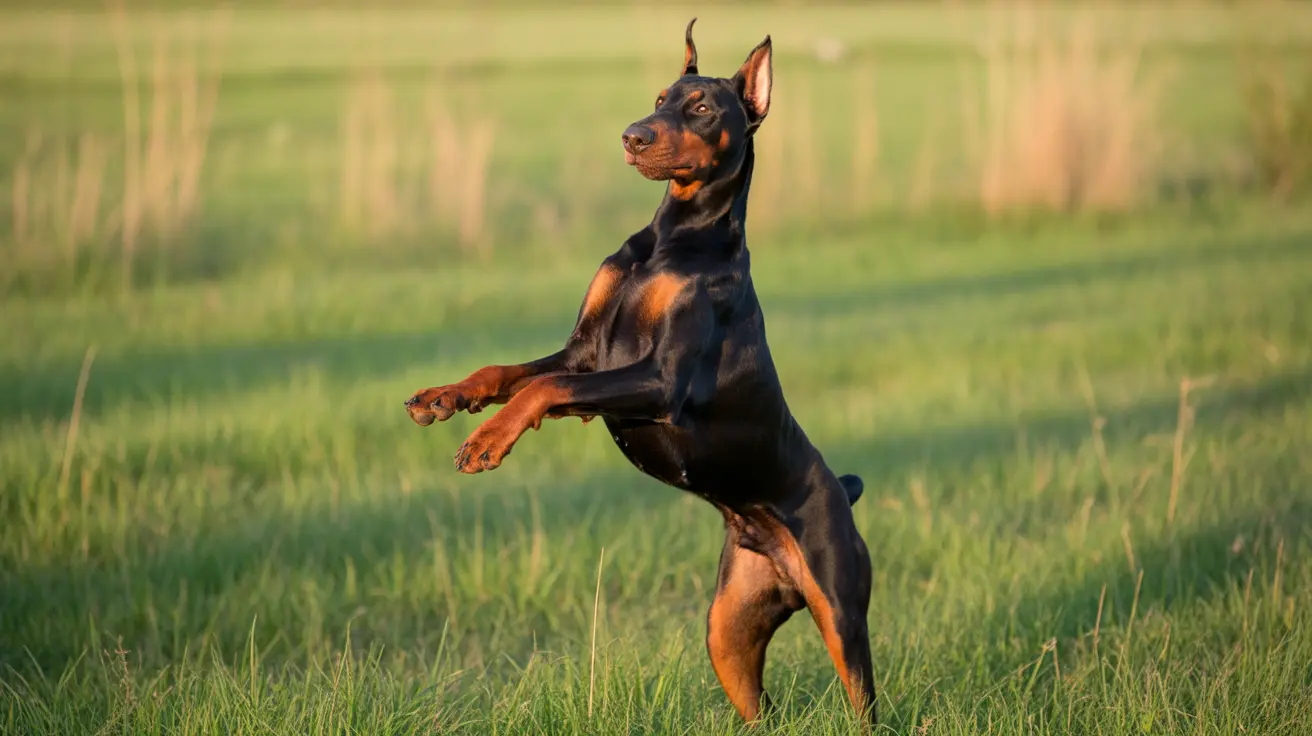What is Dancing Doberman Disease?
Dancing Doberman Disease (DDD) is a unique neurological condition that exclusively affects Doberman Pinschers. This rare disorder manifests through distinctive movements in the dog's hind legs, creating what appears to be a "dancing" motion when the animal attempts to stand still. Despite its concerning appearance, DDD is not typically associated with pain or significant reduction in quality of life.
First identified in the Doberman Pinscher breed, this condition has never been documented in any other dog breed or mammal, making it a fascinating subject for veterinary research and genetic studies. The disease typically emerges in young to middle-aged dogs, though cases have been reported in Dobermans as young as four months and as old as ten years.
Clinical Signs and Symptoms
The hallmark sign of Dancing Doberman Disease is the characteristic flexing or lifting of the hind legs while standing. Initially, this behavior might affect just one leg, but it often progresses to involve both hind limbs. When both legs are affected, dogs typically shift their weight back and forth, creating the distinctive "dancing" movement that gives the condition its name.
Other notable symptoms include:
- Involuntary muscle contractions in the rear legs
- Difficulty maintaining a standing position
- Increased tendency to sit or lie down
- Progressive muscle atrophy in affected limbs
- Normal walking and running ability
Diagnosis and Testing
Diagnosing Dancing Doberman Disease requires a thorough process of elimination, as many other conditions can present with similar symptoms. Veterinarians typically conduct comprehensive physical examinations and may recommend various diagnostic tests to rule out other conditions such as hip dysplasia, intervertebral disc disease, or spinal problems.
Common diagnostic procedures may include:
- Blood tests to check muscle enzyme levels
- Imaging studies (X-rays, MRI)
- Electromyography (EMG)
- Muscle and nerve biopsies in some cases
Treatment and Management Strategies
Currently, there is no cure for Dancing Doberman Disease. However, many dogs with DDD can maintain a good quality of life with appropriate management strategies. The focus of care typically centers on maintaining muscle strength and providing comfortable living conditions.
Management approaches may include:
- Regular physical therapy exercises
- Massage therapy to maintain muscle condition
- Providing non-slip flooring at home
- Regular veterinary check-ups to monitor progression
- Maintaining a healthy weight to reduce strain on legs
Impact on Breeding Programs
Given the likely genetic nature of Dancing Doberman Disease, responsible breeding practices are crucial. Dogs diagnosed with DDD should not be used for breeding purposes to help reduce the incidence of this condition in future generations. This recommendation highlights the importance of genetic testing and careful breeding selection in the Doberman Pinscher community.
Frequently Asked Questions
What are the early signs and symptoms of Dancing Doberman Disease in Doberman Pinschers?
The earliest sign is typically the intermittent lifting or flexing of one hind leg while standing. This may progress to involve both hind legs, creating a characteristic "dancing" movement. The condition does not usually affect walking or running ability.
How is Dancing Doberman Disease diagnosed and differentiated from other neurological or orthopedic conditions?
Diagnosis is primarily made through elimination of other conditions. Veterinarians will conduct physical examinations, blood tests, and imaging studies to rule out other causes. The diagnosis is supported by the characteristic symptoms and the absence of pain.
Is there any effective treatment or management to slow the progression of Dancing Doberman Disease?
While there is no cure, management strategies include physical therapy, massage, and maintaining a comfortable environment. These approaches help maintain muscle strength and quality of life, though they don't stop disease progression.
At what age does Dancing Doberman Disease typically start to appear in affected dogs?
The condition typically appears between 6 months and 7 years of age, though cases have been reported in dogs as young as 4 months and as old as 10 years.
Should dogs diagnosed with Dancing Doberman Disease be bred, considering its likely genetic cause?
No, affected dogs should not be bred due to the likely genetic nature of the condition. This helps prevent passing the condition to future generations of Doberman Pinschers.






